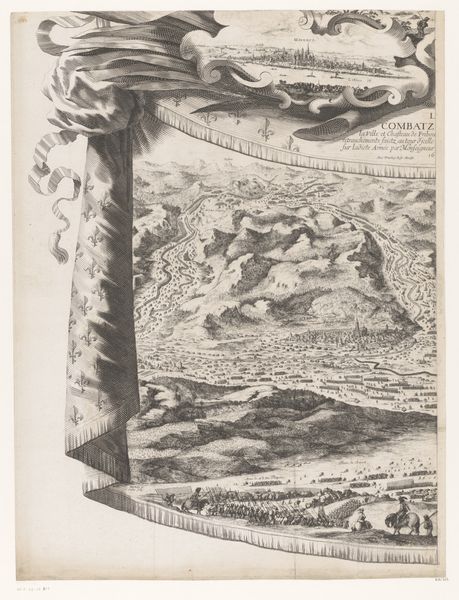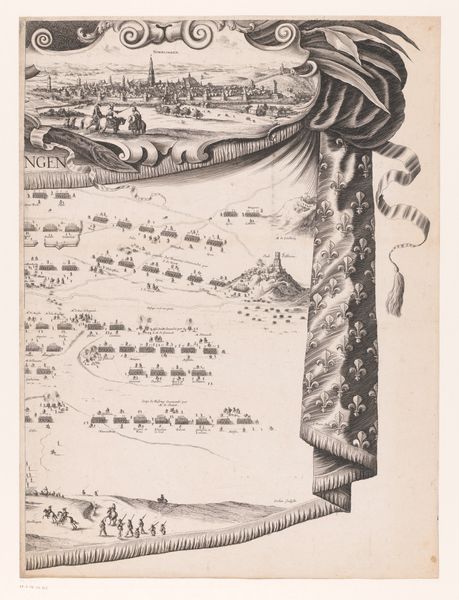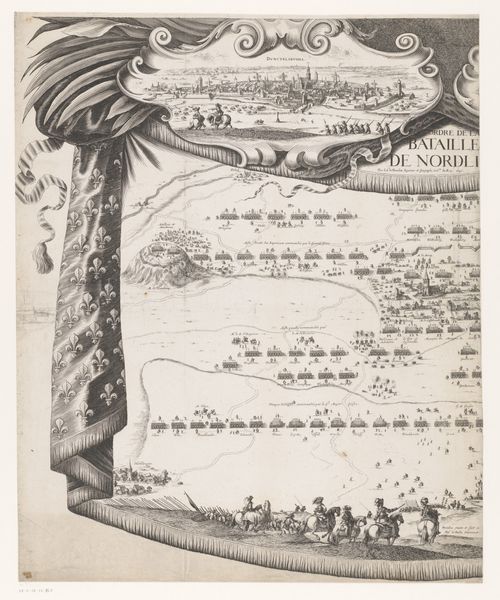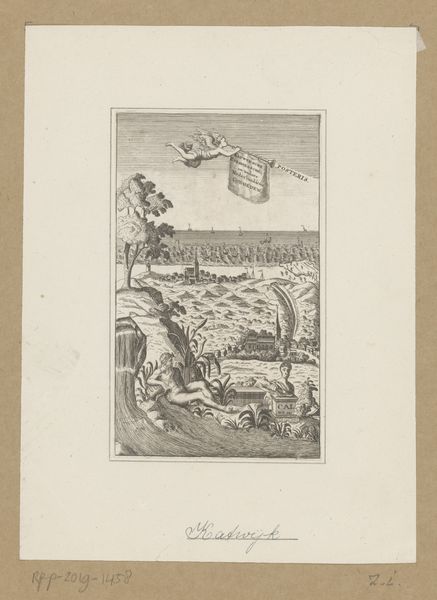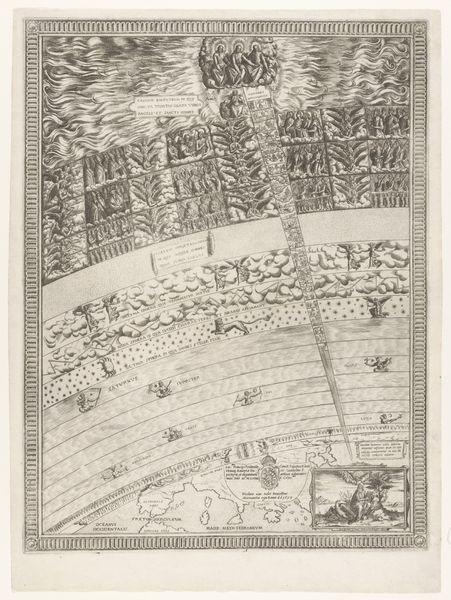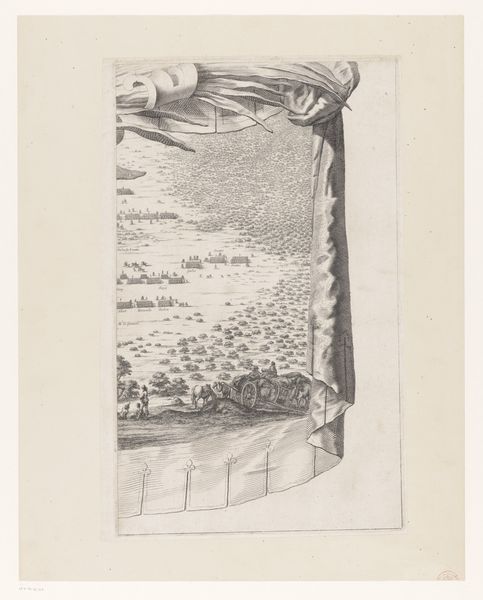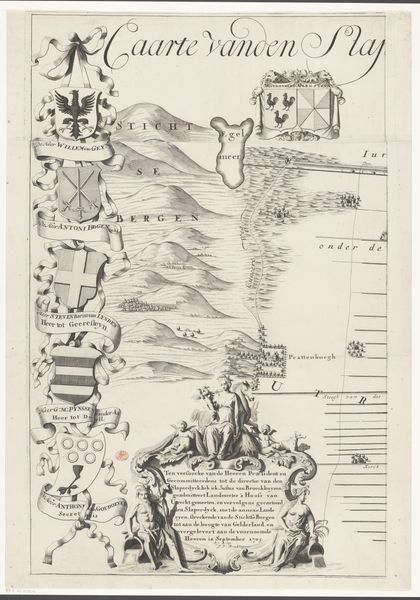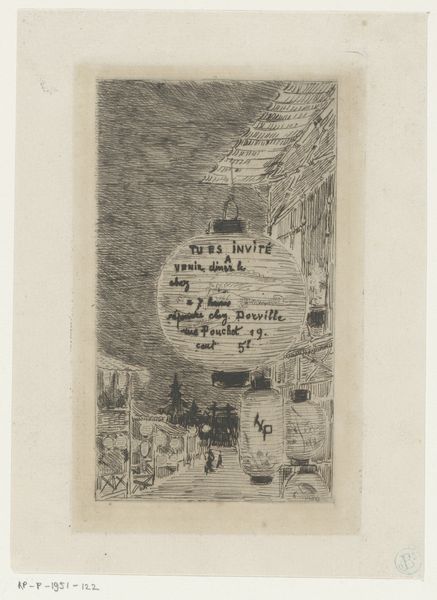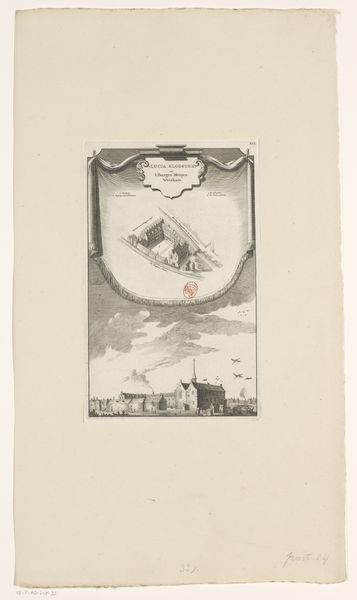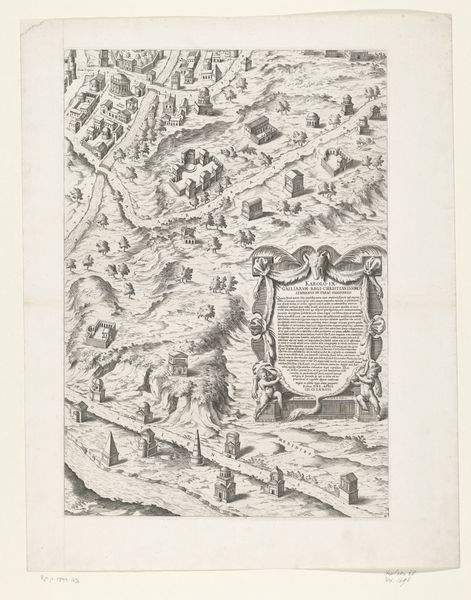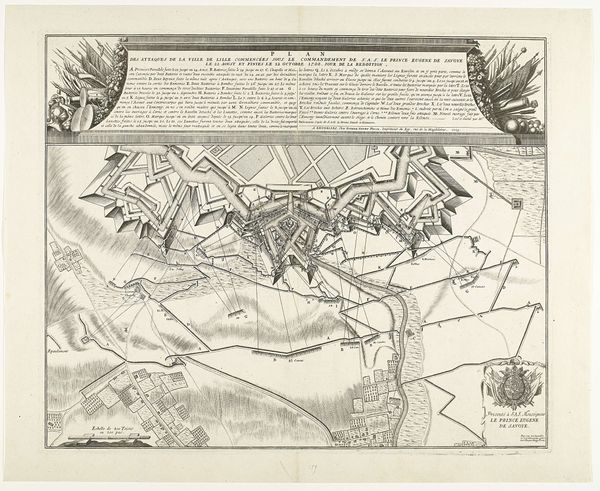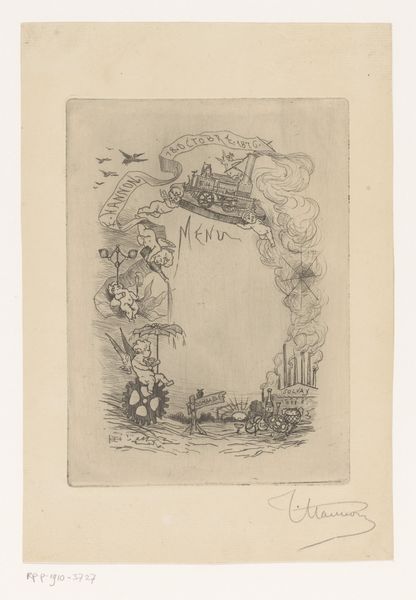
print, engraving
#
baroque
# print
#
landscape
#
line
#
cityscape
#
history-painting
#
engraving
Dimensions: height 590 mm, width 475 mm
Copyright: Rijks Museum: Open Domain
Curator: This is Nicolas Cochin's engraving, "Slag bij Fribourg (rechterdeel)," created between 1644 and 1686, and currently held at the Rijksmuseum. Editor: It strikes me immediately as quite meticulously rendered; a dramatic sweep from that ornately draped upper section to the meticulously etched landscape below. Curator: Indeed. The context here is the Battle of Fribourg, part of the Thirty Years' War, and the print reflects both military strategy and political positioning of the era. We see, not just a landscape, but a meticulously documented portrayal of power, control, and the violent imposition upon the land itself. Editor: Absolutely. Cochin’s technique here is remarkable; the layering of line and shadow, how he differentiates textures - from the delicate fabric of the drapery to the rugged terrain of the hills. Curator: The placement within the museum further contextualizes the violence with modern perspectives. We can’t help but notice the colonial undertones present through a historical narrative focused predominantly on European male leaders while ignoring those without power and who still suffered through colonialism. Editor: You're right. There's a tension inherent in the presentation—this object, finely wrought as it is, ultimately commemorates bloodshed. Is that curtain-like framing suggesting the staging of the event, as spectacle? It guides our viewing, almost as a director would orchestrate the audience’s gaze. Curator: And even now it remains a spectacle. Consider who these battles benefited. Did they truly protect anyone from true subjugation? Who holds control of history today and is the telling still inherently violent to marginalized persons? The formal qualities absolutely convey Cochin’s mastery, yet how does that mastery reinforce existing, inequitable, power structures? Editor: An astute and vital point. Seeing the piece now, my eye is drawn to that contrast even more sharply, this highly wrought aesthetic gloss applied to what must have been a brutal reality. A conflict memorialized as controlled topography, neatly packaged as art. Curator: Ultimately, this forces a contemporary viewer to reckon with their own positionality. We are complicit in the glorification of a time of tremendous injustice unless we question the context through which it’s presented and come to terms with that context's historical ramifications. Editor: Precisely, a powerful intersection where artistic finesse and historical accountability meet. Thanks for those critical perspectives, a great analysis!
Comments
No comments
Be the first to comment and join the conversation on the ultimate creative platform.
